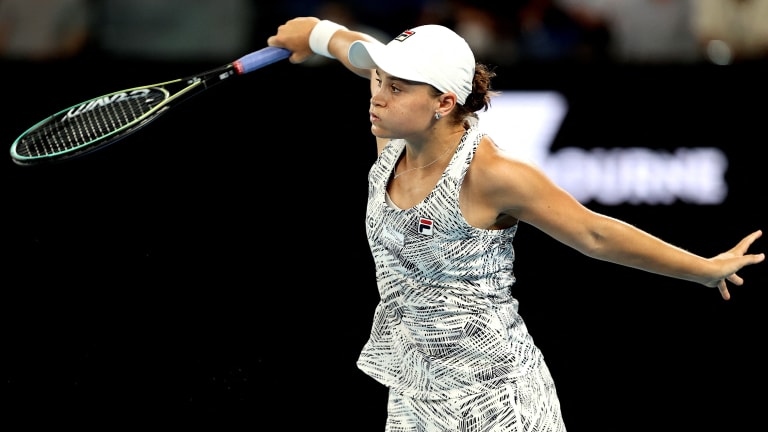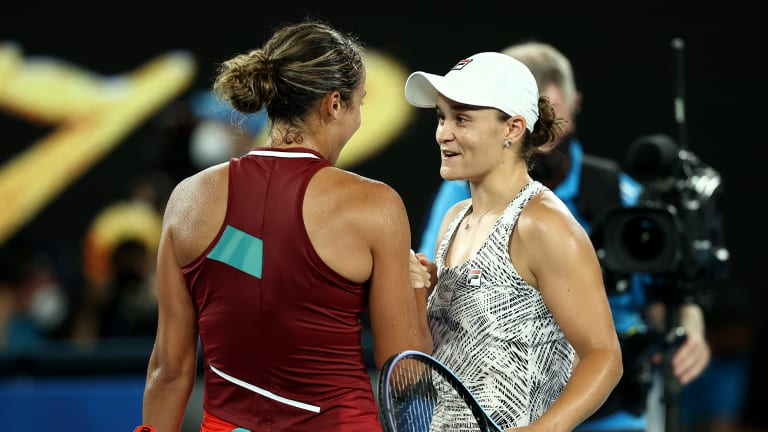Australian Open
Slice and serve: Ashleigh Barty's delicious fortnight yields first Australian Open singles final after latest blowout
By Jan 27, 2022Australian Open
Australia at Last: Reflections on a first trip to the AO
By Jan 29, 2025Australian Open
Alexander Zverev must elevate his game when it most counts—and keep it there
By Jan 27, 2025Australian Open
Jannik Sinner draws Novak Djokovic comparisons from Alexander Zverev after Australian Open final
By Jan 26, 2025Australian Open
Alexander Zverev left to say "I'm just not good enough" as Jannik Sinner retains Australian Open title
By Jan 26, 2025Australian Open
Jannik Sinner is now 3-0 in Grand Slam finals after winning second Australian Open title
By Jan 26, 2025Australian Open
Taylor Townsend and Katerina Siniakova win second women's doubles major together at the Australian Open
By Jan 26, 2025Australian Open
Madison Keys wins her first Grand Slam title at Australian Open by caring a little bit less
By Jan 25, 2025Australian Open
Henry Patten, Harri Heliovaara shrug off contentious first set to win Australian Open doubles title
By Jan 25, 2025Australian Open
Aryna Sabalenka takes a rare loss in Australian Open slugfest
By Jan 25, 2025Slice and serve: Ashleigh Barty's delicious fortnight yields first Australian Open singles final after latest blowout
The WTA world No. 1 cruised past Madison Keys, 6-1, 6-3, to become the first Aussie woman since Wendy Turnbull in 1980 to get through to the championship match at the Melbourne major.
Published Jan 27, 2022
Advertising
Advertising

Barty's backhand knifing contributed to Keys making 24 unforced errors (in comparison to just eight winners).
© AFP via Getty Images
Advertising

Barty improved to 3-1 in major singles semifinals; Keys dropped to 1-4.
© Getty Images